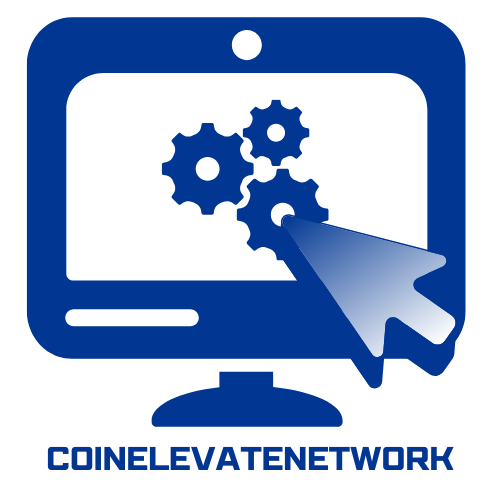In a world where coding can feel like deciphering an ancient language, no-code platforms are the superhero sidekicks we never knew we needed. Imagine whipping up an app faster than you can say “JavaScript” while sipping your morning coffee. No-code tools empower anyone to transform their brilliant ideas into reality without the headache of complex programming languages.
Table of Contents
ToggleWhat Are No-Code App Ideas?
No-code app ideas leverage user-friendly platforms that enable individuals to design applications without coding expertise. Such concepts cater to various needs, addressing areas like project management, e-commerce, and social networking. They provide innovative solutions to common problems, streamlining workflows and enhancing user experiences.
Educational tools represent one area where no-code applications can shine, helping users acquire new skills through interactive features. For instance, learning management systems can facilitate the tracking of user progress, assessments, and course materials without complex setup requirements. Businesses benefit from these applications by simplifying processes like customer relationship management and appointment scheduling.
Event planning offers another rich domain for no-code applications, organizing logistics while managing guest lists and ticketing effortlessly. Fitness tracking apps illustrate how users can monitor health data, set goals, and connect with communities, all without technical barriers. Marketing automation tools help users handle campaigns, track analytics, and manage social media, all while simplifying the user experience.
Content creation apps allow users to develop blogs, videos, and graphics using intuitive interfaces, eliminating the need for technical skills. Financial management tools also gain traction, helping individuals manage budgets, track expenses, and visualize spending through no-code solutions.
Exploring these areas reveals the vast potential of no-code app ideas, empowering individuals to innovate without relying on extensive programming knowledge. As these platforms continue to evolve, they open doors for creativity and efficiency in various sectors.
Benefits of No-Code Development

No-code development offers several advantages, making it an appealing choice for aspiring app creators. This approach breaks down barriers, enabling users to craft applications easily.
Accessibility for Non-Developers
Accessibility stands out as a vital benefit of no-code development. Individuals lacking programming skills can still participate in the app creation process. Many user-friendly platforms allow non-developers to design applications that meet their specific needs. Templates and drag-and-drop features speed up the design process. With this level of accessibility, creativity flourishes, as more ideas come from diverse backgrounds. Entrepreneurs without technical expertise effectively drive innovation through these platforms.
Speed of Development
Speed significantly increases when utilizing no-code platforms. Developers can launch applications in days or even hours, unlike traditional coding, which may take weeks or months. Rapid prototyping enables users to test ideas and gather feedback promptly. Iterations become easier as changes require no extensive coding. A quicker development cycle reduces time-to-market, helping businesses remain competitive. This efficiency empowers entrepreneurs to seize opportunities and respond to market demands swiftly. By focusing on ideas instead of technical limitations, businesses can achieve their goals faster.
Popular No-Code Platforms
No-code platforms enable users to create applications without extensive programming knowledge. These tools provide accessible solutions for bringing various app ideas to fruition.
Overview of Top Platforms
Bubble stands out for its flexibility and ability to scale applications. Webflow excels in designing visually stunning websites without coding. Adalo allows users to create mobile apps with a simple drag-and-drop interface, making it easy for anyone. Airtable combines a spreadsheet interface with database capabilities, ideal for project management. Glide transforms Google Sheets into apps effortlessly, appealing to those seeking quick solutions.
Comparison of Features
Each platform offers unique features catering to diverse needs. Bubble supports complex workflows and integrates well with APIs. Webflow focuses on responsive design, allowing for seamless website building. Adalo provides built-in components for mobile functionalities, enhancing user experience. Airtable offers customization options, enabling users to tailor databases to specific projects. Glide’s simplicity shines in creating quick, functional apps directly linked to data sources. These features highlight how various platforms cater to different app development requirements.
Innovative No-Code App Ideas
No-code platforms empower users to develop unique applications that align with their needs. Diverse ideas cater to various sectors, enhancing productivity, health, and commerce.
Productivity and Organization Apps
Task management tools simplify workload tracking. Users can create apps to assign tasks, set deadlines, and monitor progress effortlessly. Apps like Trello and Asana exemplify how no-code designs streamline project collaboration. Integrating reminders and shared calendars promotes team efficiency. Customization options allow personalization to suit different workflows.
Health and Wellness Apps
Fitness tracking applications encourage healthy lifestyles. Users develop apps that monitor exercise routines, track nutrition, and offer wellness tips. No-code platforms support features like workout logging and habit tracking, fostering accountability. They can also connect to wearable devices for data integration. Creating meditation and mindfulness experiences enhances users’ mental health.
E-Commerce Solutions
Custom e-commerce platforms drive online sales. Entrepreneurs can build apps with product catalogs, shopping carts, and payment gateways without coding skills. No-code solutions facilitate integrations with inventory management and shipping services. Businesses can easily design apps that offer promotions and customer support. Personalized user experiences increase customer engagement, boosting sales.
Tips for Generating No-Code App Ideas
Identify specific problems that need solutions. Successful no-code apps often address pain points in various markets or industries.
Engage with potential users to gather feedback. Conducting surveys or interviews provides insights into their needs and preferences, aiding in idea generation.
Explore existing apps to find gaps in functionality. Analyzing competitors reveals features that users desire but are not widely available.
Focus on combining different functionalities. Hybrid applications that merge multiple features can attract broader audiences and enhance user satisfaction.
Experiment with various themes such as productivity, health, or e-commerce. Emphasizing specific sectors allows for the creation of targeted app solutions that cater to niche markets.
Leverage trends and emerging technologies for inspiration. Staying informed about industry developments opens opportunities to create innovative solutions that resonate with contemporary demands.
Utilize brainstorming techniques, such as mind mapping. This method fosters creativity and encourages idea exploration, making connections among diverse concepts.
Network with other no-code enthusiasts. Joining forums, attending meetups or engaging in online communities fosters collaboration and idea sharing that can spark new concepts.
Limit the initial scope to ensure feasibility. Focusing on a minimum viable product allows creators to test ideas quickly, avoiding overwhelming complexity in the early stages.
Maintain flexibility during the ideation process. Adapting ideas based on user feedback encourages continual improvement and relevance in the market.
No-code platforms are revolutionizing the way individuals approach app development. By removing the barriers of traditional coding, these tools are empowering creators to transform their ideas into functional applications quickly and efficiently.
With a wealth of innovative app ideas spanning various industries, users can find unique solutions that cater to their specific needs. The ability to prototype rapidly and iterate based on user feedback enhances the creative process and fosters a culture of innovation.
As the no-code movement continues to grow, aspiring developers can harness these platforms to explore their creativity and bring their visions to life. The future of app development is not just for coders anymore; it’s for everyone.



